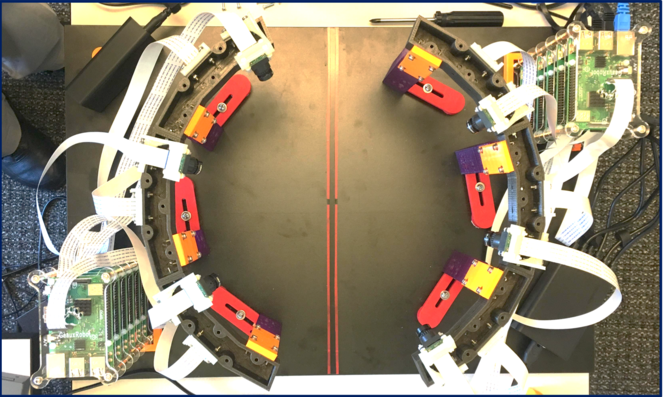|
Biodiversity Information Science and Standards : Conference Abstract
|
|
Corresponding author: Mark Hereld (hereld@anl.gov)
Received: 12 Jun 2019 | Published: 19 Jun 2019
© 2019 Mark Hereld, Nicola Ferrier
This is an open access article distributed under the terms of the Creative Commons Attribution License (CC BY 4.0), which permits unrestricted use, distribution, and reproduction in any medium, provided the original author and source are credited.
Citation: Hereld M, Ferrier N (2019) LightningBug ONE: An experiment in high-throughput digitization of pinned insects. Biodiversity Information Science and Standards 3: e37228. https://doi.org/10.3897/biss.3.37228
|
|
Abstract
Digital technology presents us with new and compelling opportunities for discovery when focused on the world's natural history collections. The outstanding barrier to applying existing and forthcoming computational methods for large-scale study of this important resource is that it is (largely) not yet in the digital realm. Without development of new and much faster methods for digitizing objects in these collections, it will be a long time before these data are available in digital form. For example, methods that are currently employed for capturing, cataloguing, and indexing pinned insect specimen data will require many tens of years or more to process collections with millions of dry specimens, and so we need to develop a much faster pipeline. In this paper we describe a capture system capable of collecting and archiving the imagery necessary to digitize a collection of circa 4.5 million specimens in one or two years of production operation.
To minimize the time required to digitize each specimen, we have proposed (
We have now designed, built and tested a prototype snapshot 3D digitization station to allow rapid capture of multi-view imagery for automated capture of pinned insect specimens and labels. It consists of twelve very small and light 8-megapixel cameras (Fig.
The prototype snapshot 3D digitization station as viewed from above. The specimen feed path is indicated by the vertical stripe with red trim at the center of the image. For scale, the marked path is 16 inches long. Scaffolding, printed in several colors of PLA plastic, to the left and right of this path provide for fixed placement of six cameras each. Three are visibly mounted above the semi-circular rail and three are less-visibly mounted below. Each is connected via ribbon cable to its control computer in the correpsonding stack at the lower left and upper right of the image.
The station is meant to be fed with specimens by a conveyor belt whose motion is coordinated with the exposure of the multi-view snapshots. In order to test the performance of the system we added a recirculating specimen feeder designed expressly for this experiment. With it integrated into the system in place of a conventional conveyor belt we are able to provide a continuous stream of targets for the digitization system to facilitate long tests of its performance and robustness. We demonstrated the ability to capture data at a peak rate of 1400 specimens per hour and an average rate of 1000 specimens per hour over the course of a sustained 6 hour run. The dataset (
Keywords
mass digitization, pinned insects, image analysis, multiple view snapshot imaging
Presenting author
Mark Hereld
Acknowledgements
We thank Petra Sierwald, Rüdiger Bieler, and Crystal Maier for many informative discussions about workflows and current practices. This material is based upon work supported by Laboratory Directed Research and Development (LDRD) funding from Argonne National Laboratory, provided by the Director, Office of Science, of the U.S. Department of Energy under contract DE-AC02-06CH11357. Additional support was provided by the Field Museum of Natural History.
References
-
Towards Automated Transcription of Label Text from Pinned Insect Collections.2018 IEEE Winter Conference on Applications of Computer Vision (WACV)https://doi.org/10.1109/wacv.2018.00027
-
Designing a High-Throughput Pipeline for Digitizing Pinned Insects.2017 IEEE 13th International Conference on e-Science (e-Science)https://doi.org/10.1109/escience.2017.88
-
LightningBug ONE, a multi-view snapshot dataset for development of automated digitization algorithms. https://silo18.github.io/LightningBugONE/. Accessed on: 2019-4-08.
